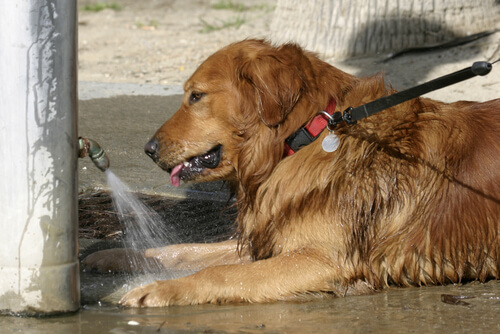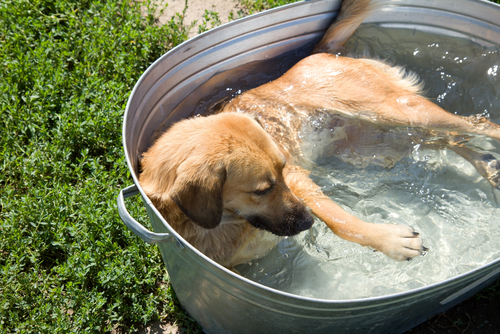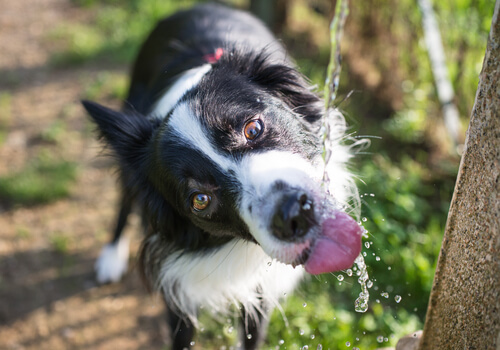How to Protect Your Dog from Heat Stroke

Summer is here and we should all take care of ourselves with the high temperatures. And our dear furry friends are no different, especially when we consider how sensitive they are to the elevated temperatures. That is why you must be very careful to protect your dog from heat stroke.
Information about heat stroke in dogs
Be aware that the summer is not the only season that your furry friend may suffer from this problem. Exposing your dog to an intense exercise session or leaving him alone in an enclosed space without ventilation, such as a crate or a car, are all potential causes of heat stroke at any time of the year.
Remember that dogs sweat through the pads of their paws , but the main part of the body that releases heat is the mouth thanks to panting.

When a dog suffers from heat stroke, his or her body temperature, which normally averages 38 degrees Celsius, can reach up to 42 degrees.
This situation can bring serious consequences because of the cellular injuries that usually occur from the lack of oxygen, and may affect various organs.
Heat stroke may have serious consequences for your furry friend. For this reason it is always best to prevent it than to treat it.
Signs that a dog is suffering from heat stroke
Among the signs that your dog is suffering from heat stroke, we would like to point out:
- Red or dark mucous in the mouth or eyes.
- Very accelerated breathing or excessive panting.
- Bloody diarrhea.
- Vomiting.
- Extreme weakness.
- Seizures.
- Postration.
- Loss of consciousness.
How to prevent heat stroke in our furry friends
The best thing you can do regarding heat stroke is simply to avoid it. How do you manage that? By paying attention to these matters:
- Make sure your furry friend always has access to clean, cold water.
- Be careful not to expose your dog to the sun during times of the day with high temperatures.
- Choose times of day with lower temperatures for walks, games and exercise.
- If the animal has access to a yard, balcony or roof, make sure that you have shady spaces and drinking water.
- Inside the house, put the animal in well ventilated places.
Never leave your dog alone in the car
A topic that deserves special mentioning in relation to heat stroke in dogs is the care that must be taken in cars.
Never, under any circumstance, leave your furry friend alone inside a car, even if the vehicle is in the shade or the temperatures are not that high.
The risk of your dog dying in these circumstances is very great, given that the car can become very concentrated with heat in a short amount of time and can be transformed into a mortal trap.
Know which dogs have the highest risk of heat stroke
While it is true that any dog can suffer from heat stroke, there are some dogs that have a greater predisposition, for which you should be extremely careful. Take note:
- Flat-nosed dogs, like Pugs, Boxers, or Bulldogs.
- Older animals, especially those with respiratory problems.
- Puppies.
- Obese furry friends.
How to treat a dog affected by heat stroke

Faced with a furry friend suffering from heat stroke one should act quickly. For this reason, the First Aid that you provide before receiving medical attention usually makes the difference between life and death. Take note:
- Put the dog in the coolest place that you can.
- Try to make the dog drink water, but do not make him if he cannot drink on his own.
- Cool your dog down. But pay attention that water should not be too cold, much less freezing. Neither should you give her an immersion bath nor cover her with wet towels.
In any case, consult your vet over the phone about the steps to take until the animal receives professional help.